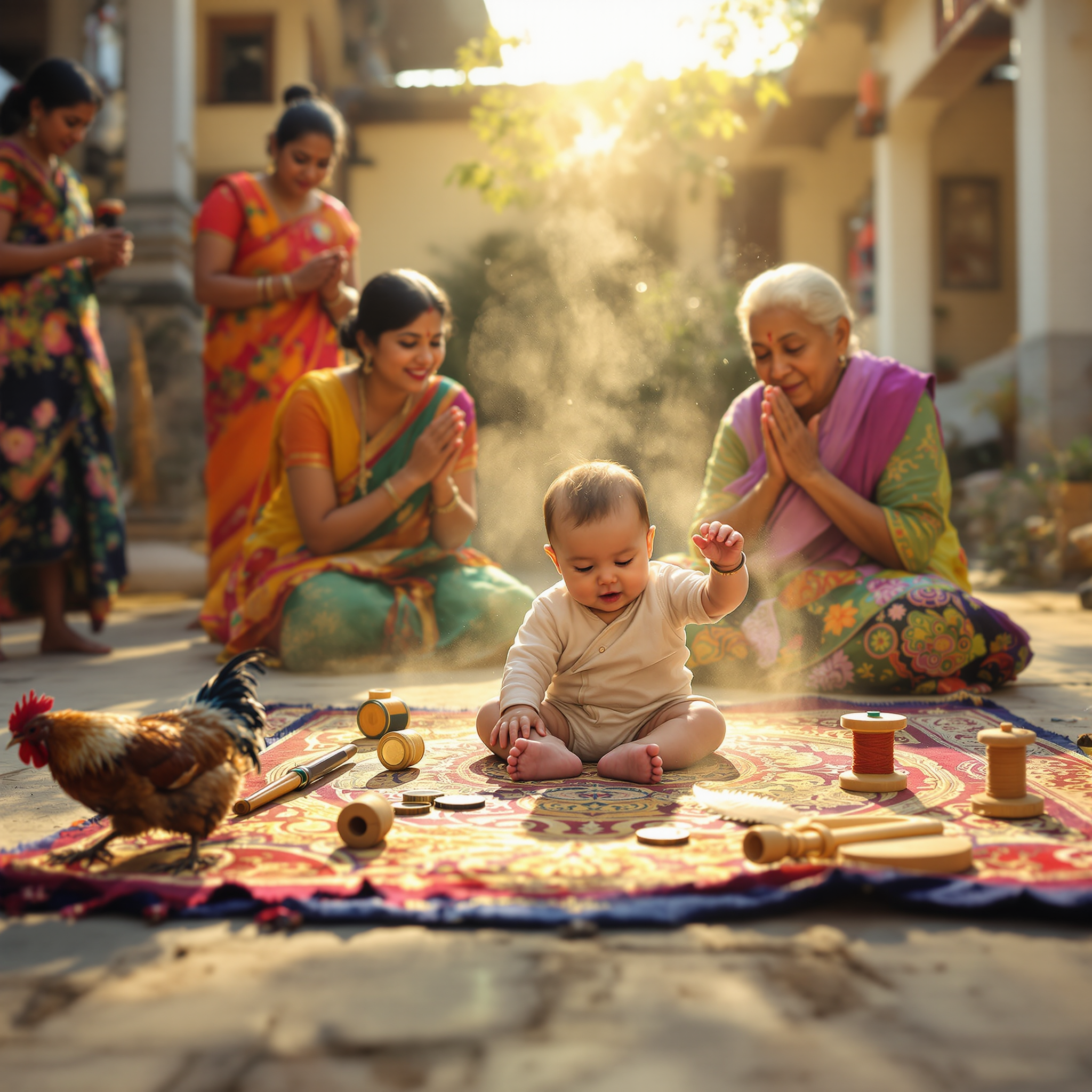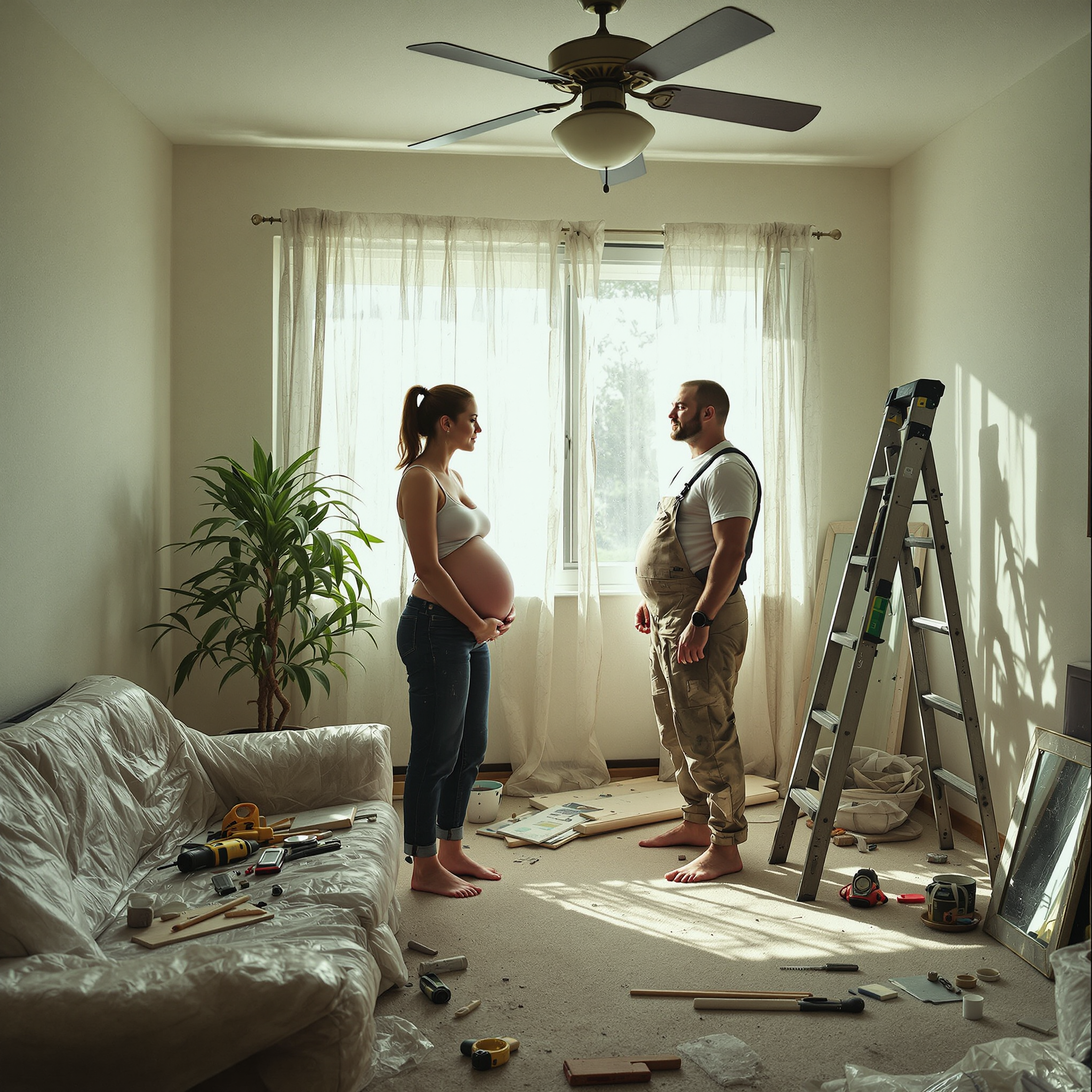In many Western and some Eastern wedding traditions, it’s seen as unlucky if the groom arrives at the ceremony venue after the bride. This belief emphasizes punctuality as a symbol of responsibility and commitment. Traditionally, the groom is expected to be at the altar first, awaiting the bride’s entrance — a gesture interpreted as respectful and protective. Some believe that if the groom lags behind the bride or keeps her waiting, it upsets the harmony of the marriage and may foreshadow imbalances in leadership, direction, or emotional investment within the relationship. While there’s no formal ritual attached, the groom’s punctual arrival is often reaffirmed by family members and wedding planners. In some cultures, respecting this order is seen as a symbolic gesture aligned with the idea that the groom is ready to receive and honor his future spouse.

A baby’s future career or fate is predicted by the first object they select during a ceremonial setup.
In several Asian and Eastern European cultures, a traditional ceremony is held for babies usually around their first birthday. Known


